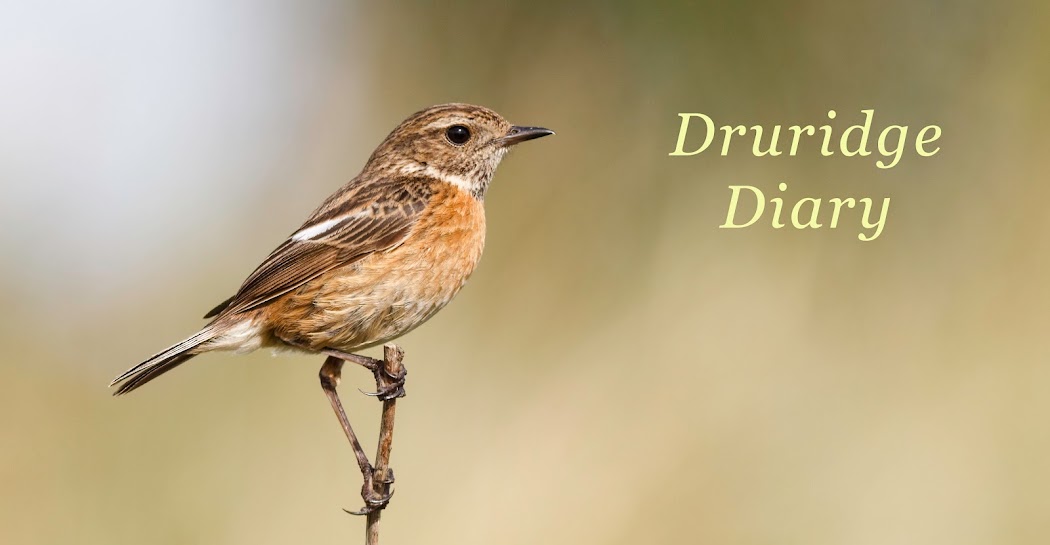I gave a talk about my Druridge patch to the north Northumberland Bird Club the other week and they were so impressed (with the patch, not me) that they decided they would make it the next destination for one of their field outings. When they told me they were coming, I volunteered to show them around.
They arrived yesterday morning - ten of them. Despite the forecast, the morning started off dry and quite calm. I showed them the plantation and the bushes by the entrance where we picked up our first chiffchaffs of the morning with goldcrests and a flock of long-tailed tits. We then headed north along the road. I got quite excited by a fly-over mistle thrush (year tick) and I explained that this one of the great things about patch birding - common species like mistle thrush, collared dove or treecreeper are exciting finds. A great-spotted woodpecker followed the mistler.
A tractor and trailer, full of shooters, passed us, turned around at the turning circle before heading back towards the farm. As we got to the Budge screen and started to admire the large flock (300+) of teal, they arrived in the fields beyond and started shooting pheasants. Up went the teal with most of them heading off to find a quieter pond. I still don't understand how anyone can call pheasant shooting 'sport'.. With nothing much of note on the fields, we continued north towards the path to the Oddie hide. I explained the various habitats on the patch as we went.
 |
| Photo: Margaret G |
There was a handful of tufted duck on the big pool and a juvenile great-crested grebe was noteworthy. As we returned back along the path the first raindrops fell. We paused briefly when I thought I heard a yellow-browed warbler but couldn't locate it. By the time we got to the road it was raining heavily and we took the collective decision to call it a day and head back to the cars.
We saw 50 species in just over two hours which isn't bad considering we've had a week of westerly winds. The full list is here.
With strong northerlies overnight and the first little auks being reported from Tyneside, I decided to try a seawatch this morning. It didn't look promising with squally showers making for poor visibility. Thankfully most of the birds were close-in, especially the gannets. I did an hour and failed to find a little auk amongst the passing guillies. Highlights included a drake scaup, seven goosanders, great northern diver, two red-throated divers and four velvet scoters. Full list here
 |
| Grim |











